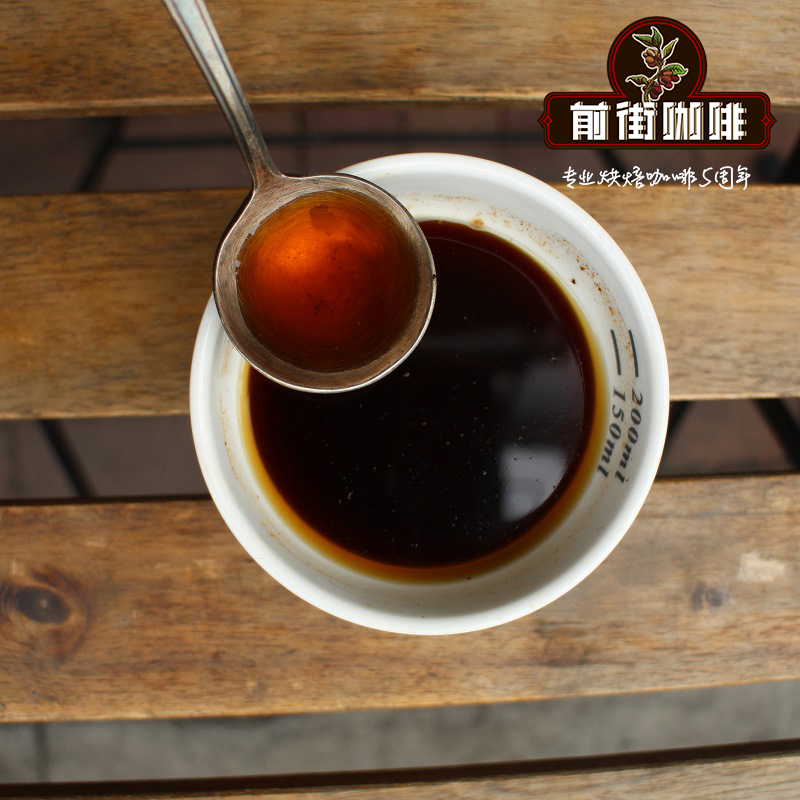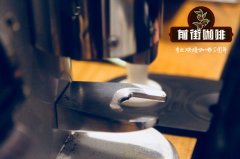The flavor characteristics of Brazilian pectin sun-cured coffee beans with huge production? How to cook Brazil Santos by hand

Professional coffee knowledge exchange more coffee bean information please follow the coffee workshop (Wechat official account cafe_style)
The flavor characteristics of Brazilian pectin sun-cured coffee beans with huge production? How to brew Brazilian Santos coffee by hand?
The largest coffee producer, all grades and types of coffee account for 1/3 of the global consumption.
Has a place in the global coffee market, although Brazil faces several times more natural disasters than other regions
But its plantable area is enough to make up for it.
There are many kinds of coffee here, but its industrial policy is abundant and cheap.
So there is not much premium coffee, but it is a good choice to mix with other coffees.
One of the most famous is Sandos Coffee, which tastes mellow and neutral, and it can be boiled directly.
Or mixed with other kinds of coffee beans into mixed coffee, is also a good choice.
Other kinds of Brazilian coffee, such as Rio, Parana, etc., do not need much care.
Can be mass-produced, although the taste is relatively rough, but it can be regarded as a kind of coffee with good quality and low price.
Brazil, currently the world's largest coffee producer, accounts for about 1/3 of the world's total output. There are 26 states and 1 federal district in the country, and 17 states produce coffee, of which four states, including Parana, Sao Paulo, Minas Gerais and Espirito Santo, account for 98% of the country's total output.
Unlike the general environment in which coffee beans grow, Brazilian coffee is grown at lower elevations and grows directly in the sun to make coffee beans grow faster. The vast majority of Brazilian coffee is sun-dried rather than washed, with a moderate taste, smooth into the throat, low bitterness and an unforgettable sweet aftertaste, which is suitable for mixing with other coffees.
Brazil not only produces coffee, but also loves coffee to the extreme. Each of them drinks an average of 1200 cups of coffee a year, with a capacity of 50 to 80 milliliters per cup, making it the second largest coffee consumer in the world after the United States. For the first meal of the day, Brazilians call breakfast "morning coffee" (cafe da manha) even if they don't drink coffee.
The most famous Brazilian coffee is "Santos Coffee" produced in the state of Sao Paulo. Located in the southeastern state of Sao Paulo, the capital city of Sao Paulo (Sao Paulo), in addition to being the largest city in Brazil, with a population of more than 11 million, it is also the largest city in the southern hemisphere. Local people are used to calling it "paulistano". During the 19th century, the city of Sao Paulo became the richest city in South America because of its coffee export trade through the "Port of Santas".
The famous "Santos Coffee" is named after Santos, the outer port of Sao Paulo.
Santos coffee is produced by Coffee Arabica's Bourbon, so it is also known as "Bourbon Santos". Its neutral taste, warm and mellow taste, moderate acidity and concentration, elegant flavor, conquers the taste buds of many coffee lovers, and is regarded as the backbone of coffee. It can be drunk alone or mixed with other coffee beans to form a comprehensive coffee.
Among them, "Mamba Coffee (Mambo)" can be called the best combination of comprehensive coffee. Take the mellow Brazilian coffee beans as the base, with the rich, bitter Mandeling coffee, roughly in the proportion of 1:1 (different according to individual taste), taste carefully, you can find the deep texture and sweet flavor of Mamba coffee.
Benazon classic Mamba flavor coffee, strictly selected international coffee evaluation authority "Coffee Review" certified Outstanding coffee bean formula, showing a bright and continuous chocolate flavor, with full-bodied milk, bring a smoother taste, no sugar, faithfully present the most popular mamba flavor.
Brazilian style:
Dry aroma: honey, berries, flowers, delicate tropical fruits, toffee, flowers, citrus
Wet fragrance: floral, caramel, peach, dark berries, persistent aroma
Sipping: clean and delicate, delicate greasy, peaches, high-grade black tea, changeable flavor, sweet and sour, honey,
Taffy, polo honey, floral aroma, dark berries, red apples, raspberries, Burgundy red wine, dark chocolate, citrus chocolate, complex, rich, elegant, varied finish, delicate and long-lasting.
Qianjie cuisine is recommended:
V60 filter cup, 15g powder, water temperature 90 degrees, grinding 3, water powder ratio close to 1:15
Steaming in 30 grams of water for 30 seconds
Section: inject water until 110ml is cut off, wait for the water level to drop to 1pm 3 and then slowly inject water until 225ml stops.
That's 30-110-85.
The acidity of the washed Yega Chuefei will be brighter, like citric acid, with a more delicate taste, a more obvious citrus flavor and a bit of tea in the latter part.
Other suggestions for trickling extraction:
Normal pressure, recommended grinding degree of 3.5-4 / water temperature 90 °C
Philharmonic pressure, recommended 2.5 grinding degree, water temperature 90 °C
Hand punch: 3.5 degree of grinding, water temperature 91 °C
3.5 Grinding-90 degrees water temperature
Important Notice :
前街咖啡 FrontStreet Coffee has moved to new addredd:
FrontStreet Coffee Address: 315,Donghua East Road,GuangZhou
Tel:020 38364473
- Prev

How about Mexican coffee? is it good? introduction to the flavor characteristics of Mexican coffee beans
Professional coffee knowledge exchange more coffee bean information please follow the coffee workshop (Wechat official account cafe_style) Central American coffee-producing countries in the northernmost country, Mexican coffee beans taste good? The highest quality coffee beans produced in Mexico are the most southeastern Chiapas, which is close to the Viv Heights of Guatemala. It has alpine characteristics in the taste, which is quite similar in Mexico.
- Next

What are the well-known varieties of coffee beans grown in Brazil? What's so special about hand-made Brazilian coffee beans?
Professional coffee knowledge exchange more coffee bean information please follow the coffee workshop (Wechat official account cafe_style) what kind of coffee beans are grown in Brazil with a huge output? What's the special flavor of hand-made Brazilian coffee beans? The world's largest total output refers to the number one producing area in the coffee industry, and there is no doubt that it is South America and Brazil. Its coffee production accounts for about the world's total output.
Related
- Detailed explanation of Jadeite planting Land in Panamanian Jadeite Manor introduction to the grading system of Jadeite competitive bidding, Red bid, Green bid and Rose Summer
- Story of Coffee planting in Brenka region of Costa Rica Stonehenge Manor anaerobic heavy honey treatment of flavor mouth
- What's on the barrel of Blue Mountain Coffee beans?
- Can American coffee also pull flowers? How to use hot American style to pull out a good-looking pattern?
- Can you make a cold extract with coffee beans? What is the right proportion for cold-extracted coffee formula?
- Indonesian PWN Gold Mandrine Coffee Origin Features Flavor How to Chong? Mandolin coffee is American.
- A brief introduction to the flavor characteristics of Brazilian yellow bourbon coffee beans
- What is the effect of different water quality on the flavor of cold-extracted coffee? What kind of water is best for brewing coffee?
- Why do you think of Rose Summer whenever you mention Panamanian coffee?
- Introduction to the characteristics of authentic blue mountain coffee bean producing areas? What is the CIB Coffee Authority in Jamaica?

